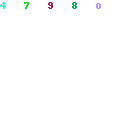- mail us
info@interactivewebservices.com - India Office
+91 11 4512 8365 - US Office
Toll Free 1-877-833-4370


seo terms glossary
A
Alt Tag: Alt text stands for Alternative text, which is an HTML tag describing an image. Used by non-graphical browsers to give information on images to their readers. It appears when the mouse is rolled over the image, and also displays when the surfer does not want to or cannot see the pictures present in a web page.
Anchor Text: Anchor text is a clickable text that is a link. It is often underlined and sometimes colored different from the rest of the content. It is a group of words describing the content of the linked page.
Affiliate Marketing: Affiliate marketing is a method of promoting web businesses through revenue sharing advertising between two websites. The affiliate website displays a banner advertisement of another website, to share their visitors. The affiliate in turn gets compensated for displaying the advertisement.
Affiliate Network: A third party that serves as a link between the merchants and the affiliates, to keep track of all the transactions occurring between the merchant and the affiliate sites. Their services include, account management, tracking and synchronization, for affiliates and marketers.
Affiliate Fraud: It is an illegal activity designed with the intention to obtain commissions in an illegitimate manner. This is to cheat merchants, other affiliates or buyers involves in an affiliate marketing process. Most common example is to perform repeated clicks on income-generating links of CPC (cost-per-click) to earn illegitimate revenue.
Ad Space: A space available on a website to publish banner ads. Multiple ad spaces can also exist on a single page.
Apache: An open source web server software, freely available. It is pervasive on UNIX, Linux, and similar operating system types.
Above the fold: A portion of the web page that is visible without scrolling.
Auto-responders: An automated response sent by the recipient's email software after he gets an email.
Top
B
Banner ad: A dynamic 468 pixels wide and 60 pixels tall box, endorsing a product or business on a web page.
Button ad: A graphic ad on a Web page that's smaller than a banner.
Back links: Inbound links which link a click to a particular page. Links routing traffic to your site are back links which enumerate methods of higher web ranks.
Bid management software: Automated software used for management and reporting of paid search marketing across search engines these software use automated management and reporting of campaigns and track activities.
Black–hat SEO: SEO experts who use unethical practices, trying to dodge search engine algorithms to attain higher rankings.
Blog: A public platform which accommodates exchange of information and opinion when blogers post their opinions for all others to read.
Bounce rate: Proportion of visitors to a web page or web site that exit after visiting a single web page only, which is usually expressed as a percentage.
Brand mis–spellings: A user mistypes a brand into the search box or into the URL address box. Best practice is to ensure the brand is visible.
Bounce Messages: Emails that are undelivered and sent back to the server from where they had originated.
Bulk: Messages sent by spammers, and usually considered as spam.
Top
C
Cookies: Files from a Website that are transferred to and stored on a visitor’s Website that provide information, such as what the visitor purchased and what site the visitor was on immediately preceding the visit, to the Website.
Contextual marketing: Placing merchandise near relevant content.
CPC: Abbreviation for cost-per-click. It is a billing mechanism of charging for an ad depending on the number of times the ad is clicked.
CPL: Abbreviation for Cost Per Lead, or the cost or price associated with every lead. It is most commonly the cost to an advertiser to generate a lead from an ad placement.
CPM: Abbreviation for cost per thousand. It refers to a pricing system wherein an advertiser pays an agreed amount for the number of thousands of impressions an ad receives.
Cascading Style Sheet (CSS): It is a new feature being added to HTML that gives both Web site developers and users more control over how pages are displayed. Most commonly, a control over fonts, images, page layout and spacing.
Cloaking: An unethical practice of dodging the content of the website from users and search engines at a given point of time and, camouflaging spammed text into the background color to hide it from user’s eye.
Call to action: Words in an email that prompt recipients to take action. These are words or phrases that appeal to users, coaxing them into buying products.
Click-through: The action of clicking on a link mentioned in an email sent for marketing purposes.
Click-through rate (CTR): It is the average number of clicks for an online ad per 100 ad impressions; a 2% click-through rate means for every 100 times the ad was seen, two people clicked on it.
Commercial Email: Mails sent to advertise a product or service, mainly for commercial purposes.
Cross-sell: It is the process of recommending additional products or services to customers who are planning to buy something from you.
Caching: In order to let user re-access information quickly Web files are stored for later re-use.
Top
D
Directories: A data bank of various sites, categorized into different genre's usually maintained by a human editor.
Doorway page: A page usually outside the navigational structure of the parent site. A link that spells a particular keyword, but redirects the visitor to an irrelevant page all-together.
Double opt-in: It is when a user subscribes the online services twice. Once by giving its email address on the web page and again while confirming its subscription. This procedure substantiates the subscriber's id for mailing software of that site.
Double opt-out: It is similar to opt-in, but used to unsubscribe from mailers. This alternative is blocked by some spam operators who do not let subscribers to opt out of the mailing procedure.
Top
E
Email Blast: An eruption of email by virtue of being sent to numerous recipients. It is done to gather attention of users about alterations or to make special announcements, etc.
Entry page: See landing page.
Express Consent: The action of a user of clicking on a particular link and agreeing to receive emails from the website.
Eye balls: It is a slang for viewers on a web page.
Top
F
False Positives: Refers to emails which are recognized as spam by email filters of the recipient but are not a spam, originally.
Format: The encoding of an email - possible in plain text, HTML or other form offered by web explorers.
Top
G
Geo navigation: Links which are exhibited on each page of the website.
Geo tracking: Mainly used in PPC services, it helps advertisers to indicate the geographical location, their ad would run.
Graphical text: JPEG and GIF format image files.
GYM: Abbreviation for Google, Yahoo and MSN.
Top
H
Hit: Number of times a web page is viewed.
HTML: Hyper Text Mar-up Language a language that is scripted to develop web pages.
Hard Bounce: Due to non-existence of the email address or the domain, emails bounce back and never reach the targeted recipient, is known as Hard Bounce.
Top
I
Impressions: A page view is recorded every time a visitor to a site loads a page in their browser.
Inbound links: Hyperlinks that point to a site from sites other than itself.
Index: A page is called indexed when search engine crawls through the page to store its information in its directory to be accessed by users later.
Top
J
JavaScript: A scripting language used to develop interactive Web Sites.
Top
K
Keyword: A word typed by surfers in the Search Engine boxes to search for related topic on the web.
Keyword density: The number of times a keyword appears in the content.
Top
L
Landing Page: The page which opens when surfer clicks on a particular text link.
Link validator: This software validates the functionality of links within a website.
Link ability: To check the potential of web page whether it could receive inbound links.
List Broker: A person or firm that resells or rent lists of email addresses for mailing purposes..
List Building: To generate a list of email addresses needed to target marketing campaigns.
List Host: The management of large email address databases and distribution of emails in bulk is carried by link host.
List Manager: The software that maintains a email mailing list.
Top
M
Meta description tag: Tag in an HTML coding document that describes the content of the particular web page.
Metric: A standard of measurement or method of evaluation.
Meta data: Structured hidden information that describe features of a document like the file structure, author or keywords.
Top
N
Niche directories: Directories that offers link to sites that focus on similar theme or that relate to the same industry.
Top
O
Online marketing: Marketing products and services over internet.
Organic SEO: Optimizing website through natural ranking.
Open Rate: It is the ratio of emails opened by the user to the total emails sent to the user.
Opt-in: The action of providing consent to be included in mailing/subscription list.
Opt-out: The process of sending emails to a mailing list of user (not subscribed) and providing the recipient the option to opt out of the list.
Top
P
Page Rank: Google's proprietary tool to asses the credibility of a web page, on a scale of 1-10, with 10 being the highest.
Page view: The number of unique visitors, who viewed a particular web page.
Paid Inclusions: When a website pays to be included in search engine result pages (SERPs).
PPC: Pay per click (PPC) is an advertising model, wherein a website pays a set amount (bid price), whenever someone clicks on their ad. This is a part of paid inclusion.
Privacy: Privacy policy of a website usually refers to the set of guidelines protecting personal information of an individual.
Top
R
Robot: Also known as spiders and crawlers and are used by search engines to index web pages present on the World Wide Web.
RSS: It stands for Really Simple Syndication and is a web format that supports live web feed.
Top
S
SEM: Search Engine Marketing is an umbrella term for the entire process of marketing your product/service or brand online.
Spamming: A term which denotes the practice of sending unsolicited communications like emails, Ads etc.
Spider: See Robot.
SERP: Search engine result page.
Sniffer: Software that monitor activities over the network (private or public).
Scraping: Web scraping or harvesting is described as a method to extract content from a website.
SEO: Search engine optimization.
Search query: A keyword/key phrase entered into a search engine.
Segmentation: The method of dividing customers into groups, based on various parameters.
Soft Bounce: An email which bounces back due to a fault or unavailability of space in the user's inbox.
Spam: Usually refers to unsolicited bulk emails.
Spam Filter: Filters incorporated to segregate unsolicited mails from genuine ones and uses various rules to accomplish this.
Subject Line: A title line which conveys in brief, the content of an email to a recipient.
Top
T
Topical community: A group of websites sharing the same theme and are sometimes referred to as neighborhood.
Tracking: The process of keeping a track on the result of your email marketing campaign.
Top
U
Unique visitor: The individual who visits a website during a given period of time, and does not take into account, multiple visits made by the same individual.
Usability: The factors that are used to gauge the user friendliness of a website.
Unique Click: The number of clicks made by a user, excluding multiple clicks made by the same user.
Unsolicited Email: Mails sent for commercial and advertising purpose to a user, without his prior consent.
Top
V
Visible text: Text which is visible to a site visitor using a standard browser.
Vblog: Video Blog.
Top
W
Web Analytics: The measurement and analysis of various online activities like page visits, bounce rate, conversion rate etc.
Web syndication: The process of making content available to other sites via web feed.
White hat: It refers to ethical practices used for search engine optimization.






















